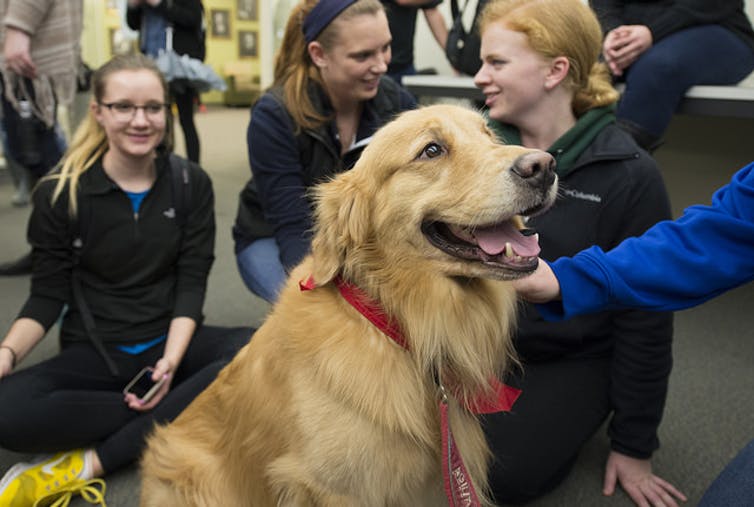Can therapy dogs improve students’ performance?

Therapy dogs and other animals are now being used in a wide variety of situations. One example of this is the rise of therapy dogs being used in schools and universities. They can help to improve a range of functions and provide a soothing presence for students who require that. Here’s more about therapy dogs and how they can help students.
What Are Therapy Dogs?
The first thing to understand is that there’s a big difference between a service dog and a therapy dog. Service dogs help people with particular needs related to a disability or medical condition; they focus on their owner at the expense of everything else. Therapy dogs are different because they react to their environment and the people around them while being guided by an owner.
Lots of people might take advantage of the therapy dog in the space of a day. The owner might guide students to pet the dog gently in order to help calm them if their studies have led to stress and an inability to reach a calm state of mind. They can also be used to calm people in situations that might be perceived as daunting or threatening by them.
The Benefits of Therapy Dogs
So, what are the benefits of therapy dogs to students? They can help to teach empathy and improve interpersonal skills for some people. Those skills are vital when studying, so can lead to improved academic performance. Animals tend to have a very soothing presence and it’s this that makes them so useful and helping people to feel calm and at ease when they might not otherwise feel that way.
Basic interaction with dogs, whether it’s petting them, or giving them pet food UK or simply taking them for a walk can make a big difference on a person’s mental wellbeing. Learner anxiety is a big problem in many schools and universities and therapy dogs are known to help combat that problem. They can also improve confidence, attendance and learning motivation.
Preparation and Risks
Dogs that are used as therapy dogs are trained extensively to ensure they’re safe to be around children and young adults in an educational context. There’s a careful selection process that each therapy dog must go through before they’re exposed to students and used to help them in schools or universities. Any unsuitable dogs won’t make it through this selection process.
There aren’t many risks involved in using therapy dogs around students because of the training and selection processes they go through. Things like sanitation have to be taken into account, of course and preparations made to ensure things are safe for both the students and the therapy dogs themselves.
It’s clear that therapy dogs do have a real impact on students and their ability to improve their performance levels. Those improvements come about as a result of students feeling more relaxed and able to connect with others. For people who struggle with those things, there’s every chance a therapy dog could help them.








